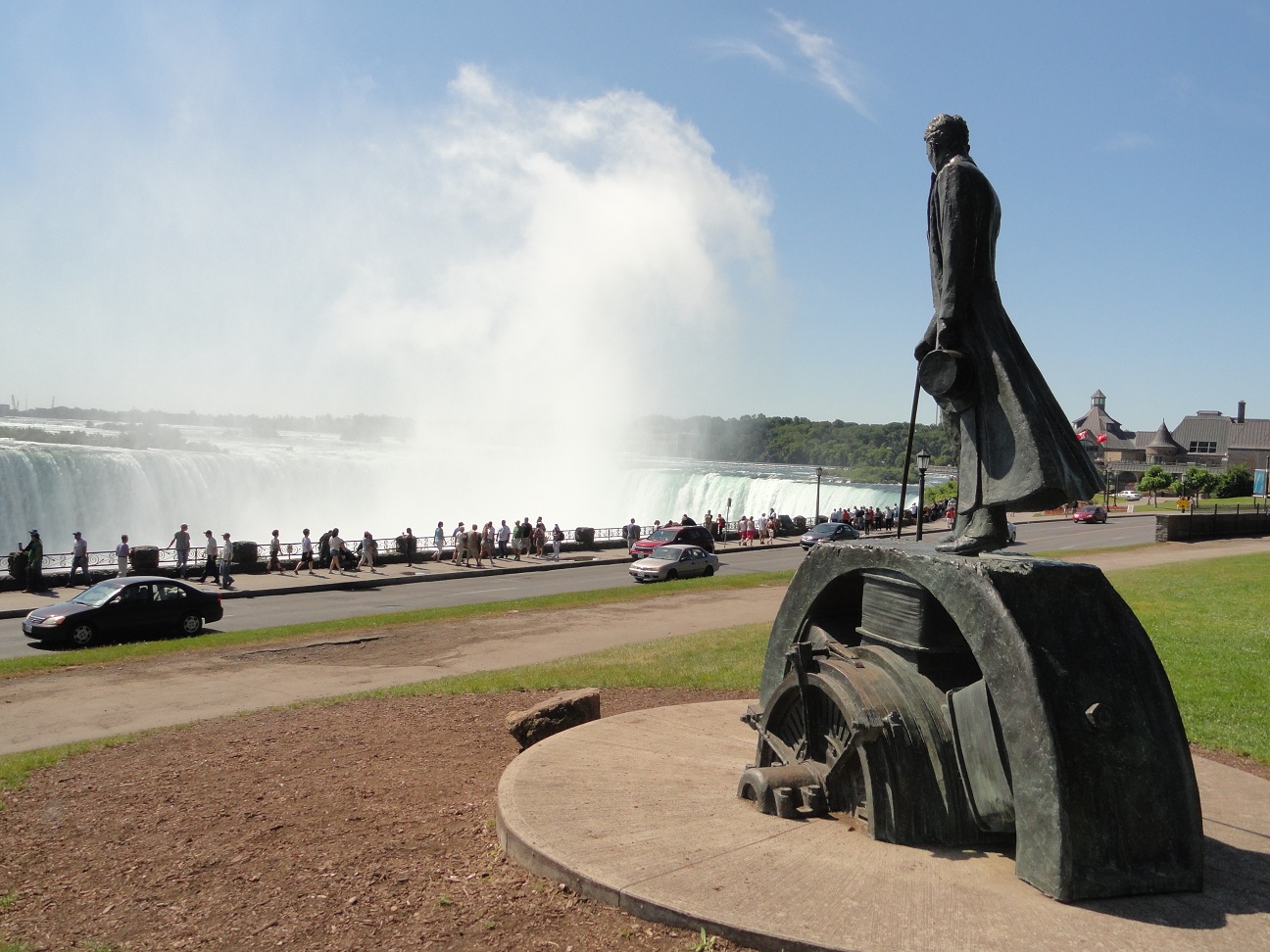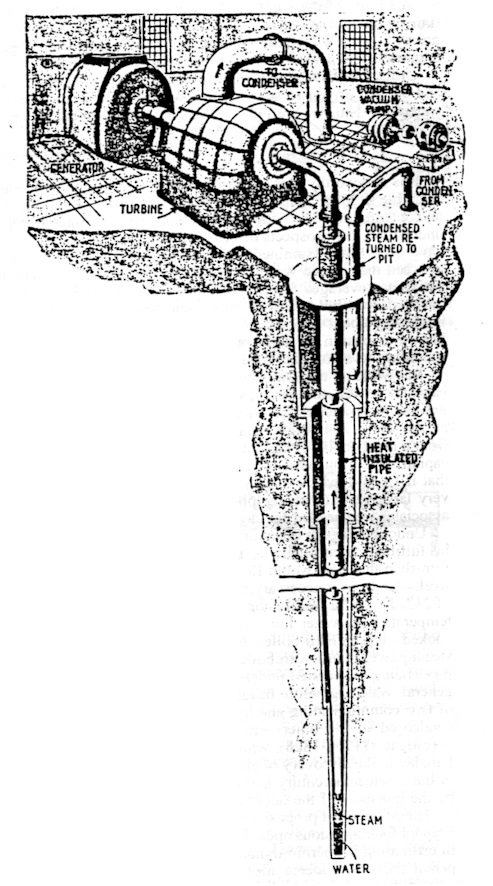Nikola Tesla was for renewable energy before it was cool to be for renewable energy.
“It seems that I have always been ahead of my time.”
From a young age he sought to harness the power of nature. He used the natural energy of June bugs to power his stick windmill. As a child he designed his first water wheel, then as an adult he fulfilled his dream by harnessing the hydroelectric power of Niagara Falls with his alternating current motors and transformers. Today he stands overlooking one of his greatest achievements.

Nikola Tesla overlooking Horseshoe Falls, on the Canadian side. Photo by David J. Kent
Tesla often spoke of harnessing the energy of the sun, stating that fossil fuels were wasteful. As far back as 1891 he argued that “nature has stored up in the universe infinite energy.” To Tesla, “the eternal recipient and transmitter of this infinite energy is the ether.” That particular idea did not hold up to scrutiny, but he continued to look to nature.
One of the most thought-provoking documents of Tesla’s numerous writings was an article he wrote for The Century Illustrated Magazine, June 1900, which was edited by Robert Underwood Johnson. In a long and sometimes mystical treatise called “The Problem of Increasing Human Energy (with special references to the harnessing of the sun’s energy),” Tesla leaped ahead a hundred years by anticipating the need for renewable sources of energy to power our planet. He noted that “besides fuel, there is abundant material from which we might eventually derive power” and suggested that “an immense amount of energy is locked up in limestone, for instance, and machines can be driven by liberating the carbonic acid through sulfuric acid or otherwise.” He even claimed to have constructed such an engine and that “it operated satisfactorily.”

Tesla was so far ahead of his time that, while others at the turn of the twentieth century were busy exploiting coal, iron, aluminum, and drilling for oil, he was already recognizing the limits of those endeavors. He was into conservation. “Whatever our resources of primary energy may be in the future,” Tesla wrote, “we must, to be rational, obtain it without consumption of any material.” He believed that natural sources of energy could “eliminate the need of coal, oil, gas or any other of the common fuels.” One way was to harness the power of the wind.
“It is difficult to believe, but it is, nevertheless, a fact, that since time immemorial man has had at his disposal a fairly good machine which has enabled him to utilize the energy of the ambient medium. This machine is the windmill.“
[The above is adapted from Tesla: The Wizard of Electricity. I explored more of Tesla’s adventures in renewable energy in my 2014 e-book noted below.]
David J. Kent is the author of Tesla: The Wizard of Electricity (2013) and Edison: The Inventor of the Modern World (2016) (both Fall River Press). He has also written two e-books: Nikola Tesla: Renewable Energy Ahead of Its Time and Abraham Lincoln and Nikola Tesla: Connected by Fate. His next book is on Abraham Lincoln, due out in 2017.
Follow me by subscribing by email on the home page. And feel free to “Like” my Facebook author’s page and connect on LinkedIn. Share with your friends using the buttons below.











Nice article and very cool picture!
Thank you, Ru.
Pingback: Nikola Tesla and Niagara Falls | Science Traveler
Educative..! That’s one way to tell ’em about sustainability..
Exactly